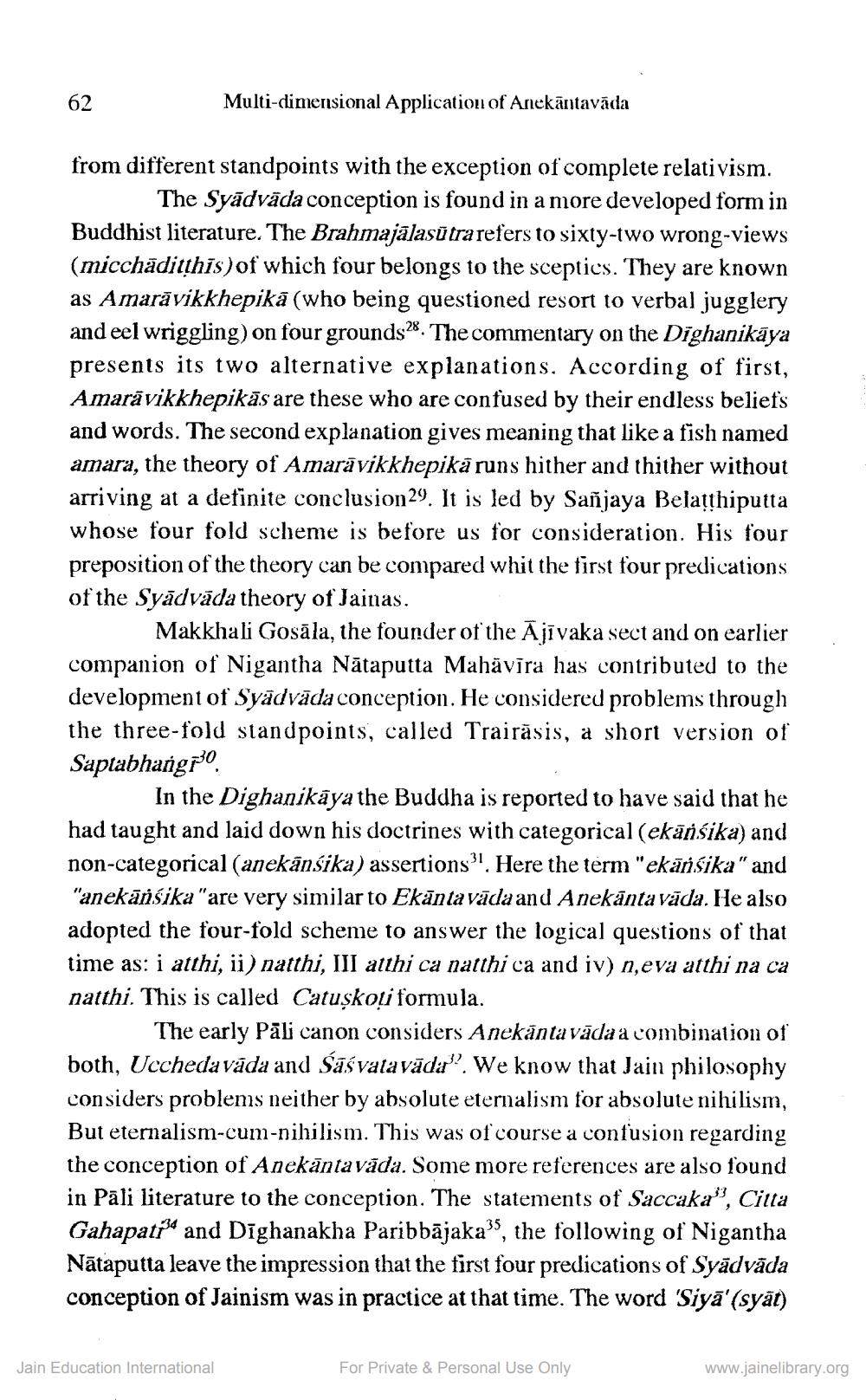________________
Multi-dimensional Application of Anekāntavāda
from different standpoints with the exception of complete relativism.
The Syādvāda conception is found in a more developed form in Buddhist literature. The Brahmajālasūtra refers to sixty-two wrong-views (micchäditthis)of which four belongs to the sceptics. They are known as Amarāvikkhepikā (who being questioned resort to verbal jugglery and eel wriggling) on four grounds28. The commentary on the Dighanikāya presents its two alternative explanations. According of first, Amarāvikkhepikās are these who are confused by their endless beliet's and words. The second explanation gives meaning that like a fish named amara, the theory of Amarävikkhepikä runs hither and thither without arriving at a definite conclusion 29. It is led by Sanjaya Belathiputta whose four fold scheme is before us for consideration. His four preposition of the theory can be compared whit the first four predications of the Syādvāda theory of Jainas.
Makkhali Gosāla, the founder of the Ājīvaka sect and on earlier companion of Nigantha Nātaputta Mahāvīra has contributed to the development of Syādvāda conception. He considered problems through the three-fold standpoints, called Trairāsis, a short version of Saptabhangro
In the Dighanikaya the Buddha is reported to have said that he had taught and laid down his doctrines with categorical (ekāñśika) and non-categorical (anekânsika) assertions. Here the term "ekārsika" and "anekāńśika"are very similar to Ekāntavāda and Anekānta vāda. He also adopted the four-fold scheme to answer the logical questions of that time as: i atthi, ii) natthi, III atthi ca natthi ca and iv) n,eva atthi na ca natthi. This is called Catuskoți formula.
The early Pāli canon considers Anekāntavāda a combination of both, Ucchedavāda and sāśvatavāda. We know that Jain philosophy considers problems neither by absolute eternalism for absolute nihilism, But eternalism-cum-nihilism. This was of course a confusion regarding the conception of Anekāntavāda. Some more references are also found in Pāli literature to the conception. The statements of Saccaka", Citta Gahapati and Dīghanakha Paribbājaka), the following of Nigantha Nātaputta leave the impression that the first four predications of Syādvāda conception of Jainism was in practice at that time. The word 'Siya'(syāt)
Jain Education International
For Private & Personal Use Only
www.jainelibrary.org




